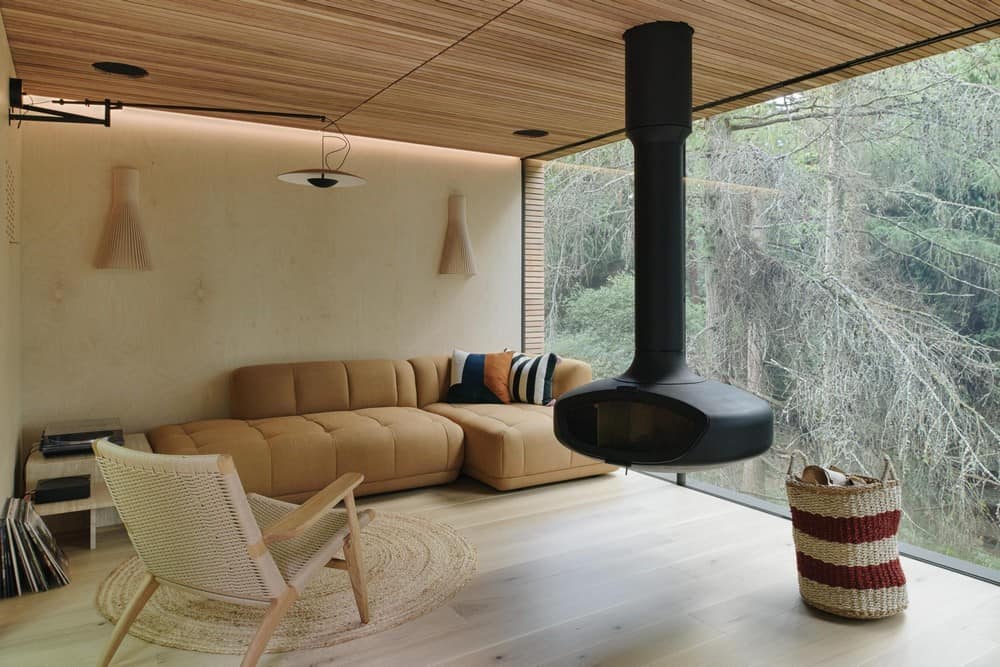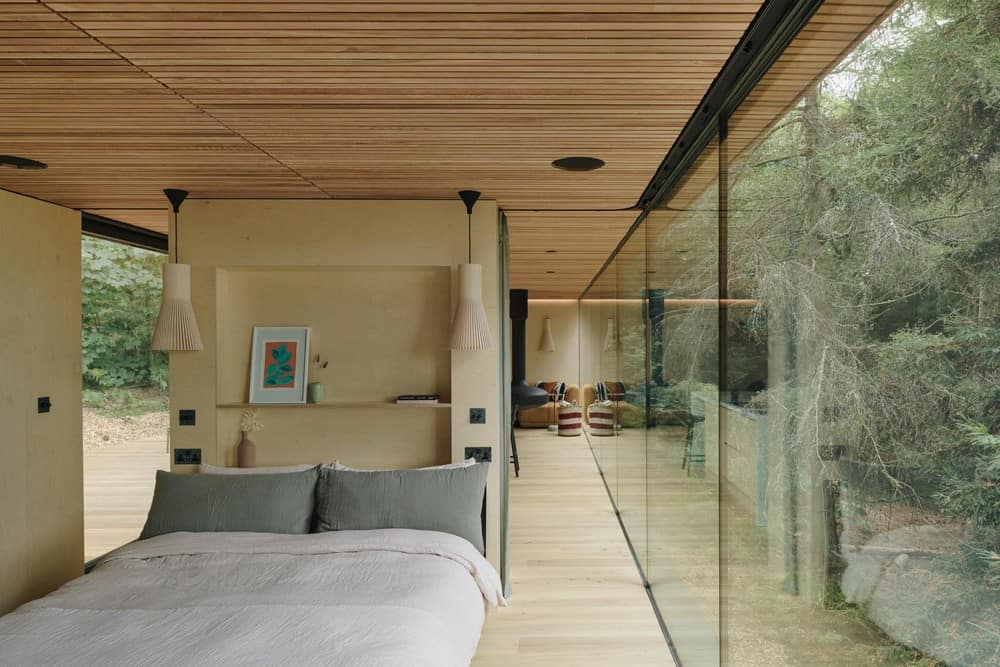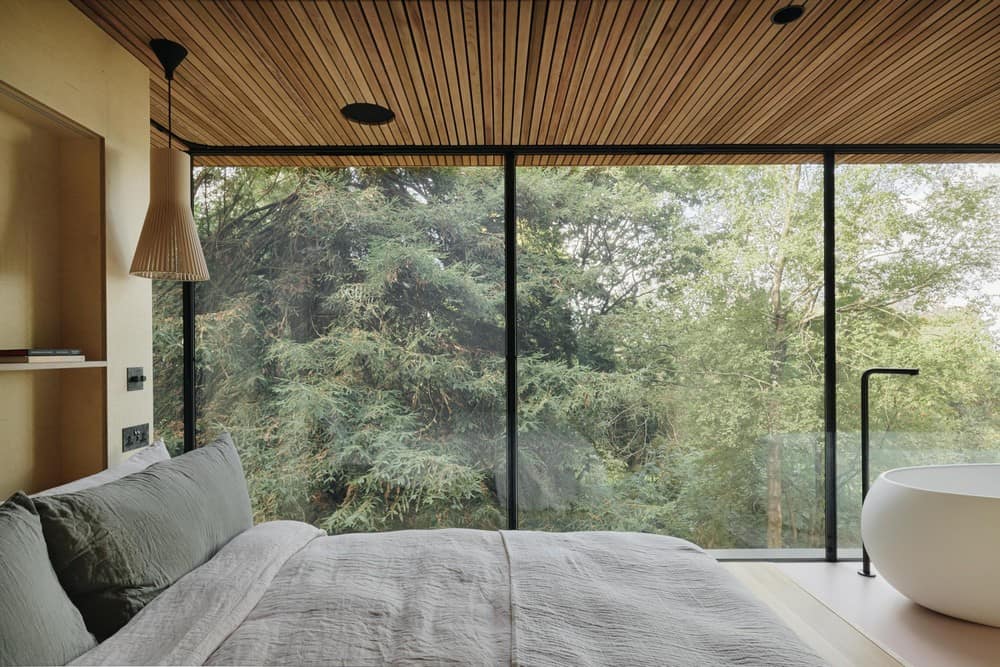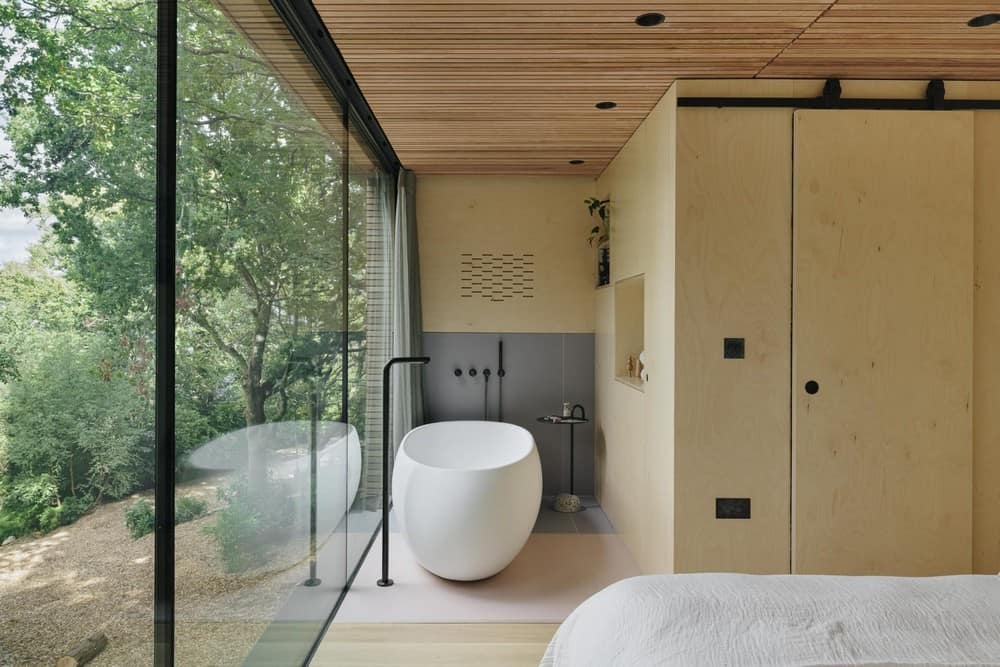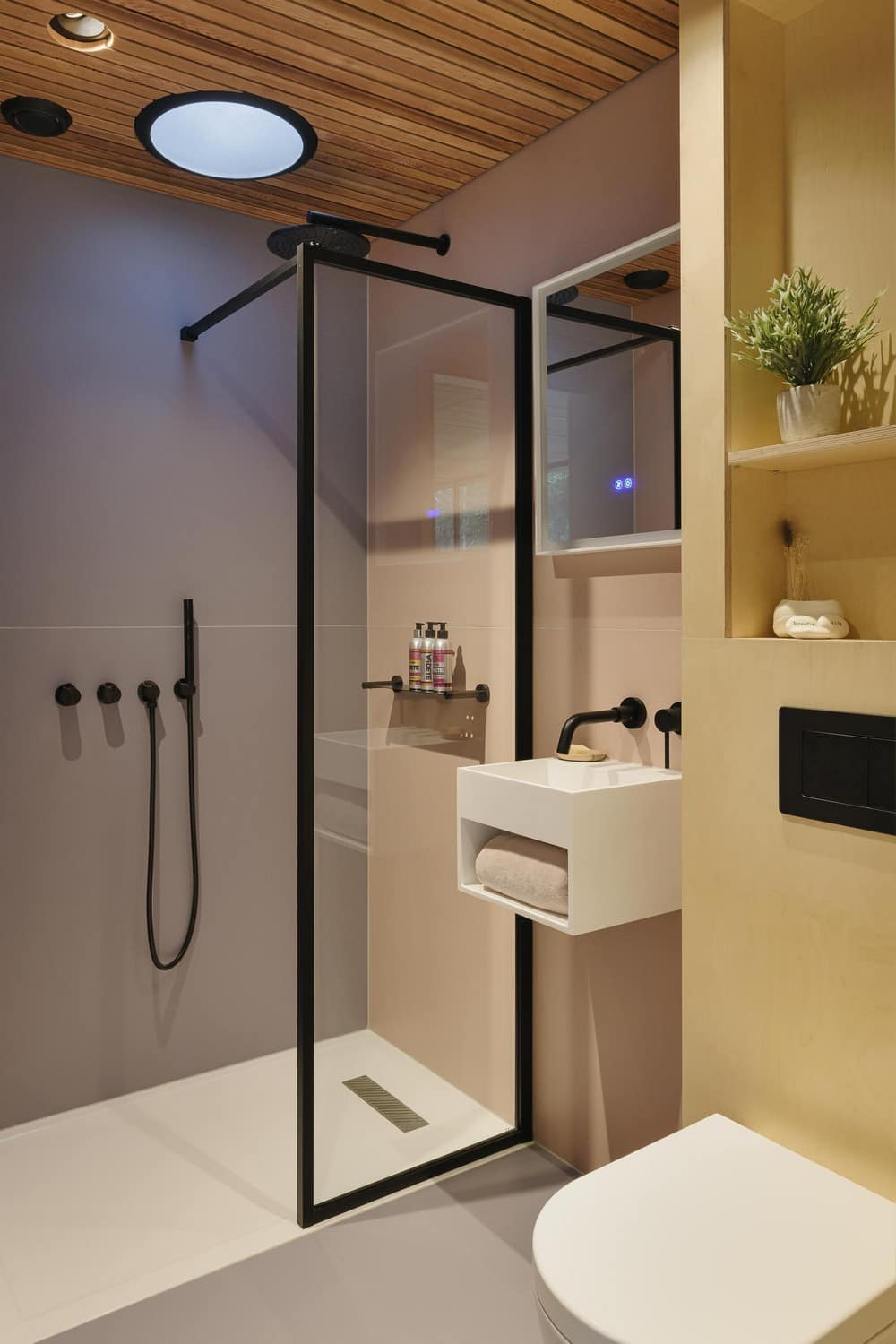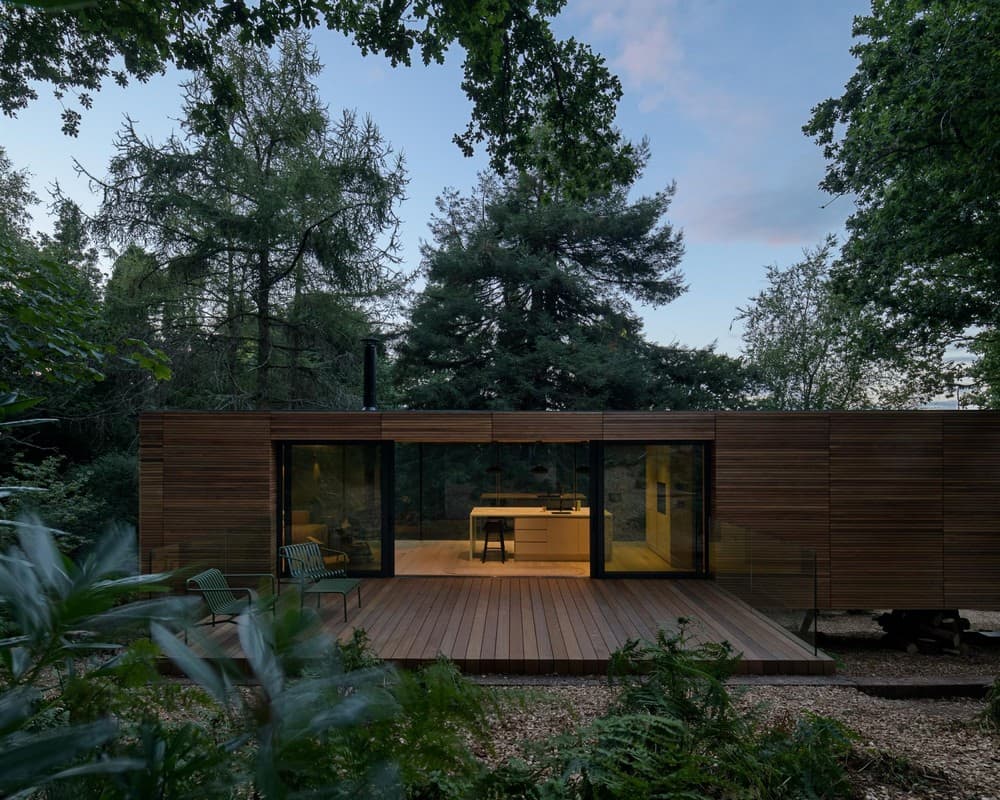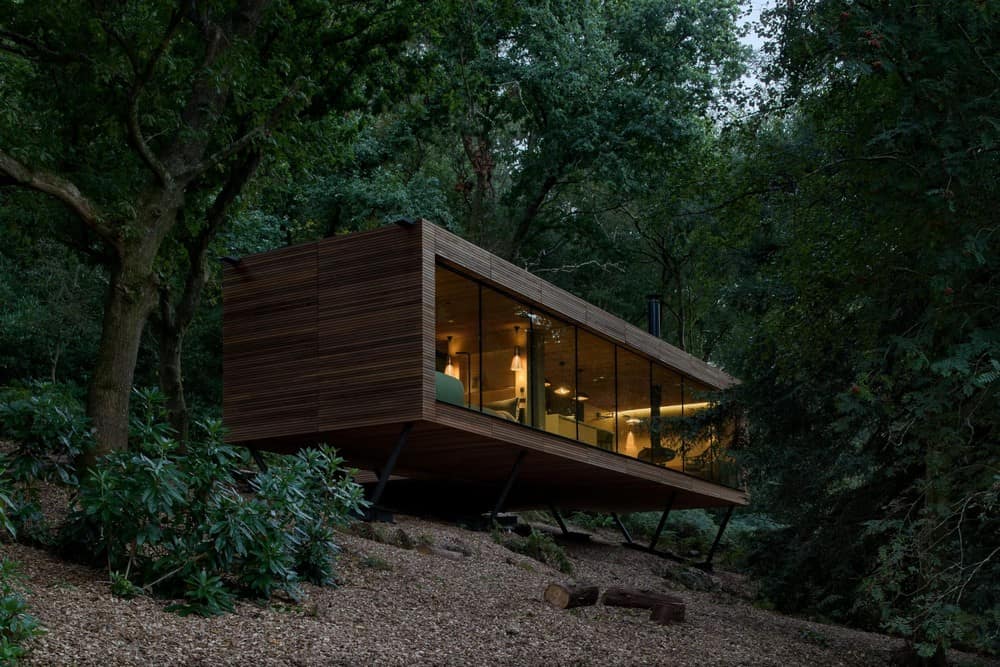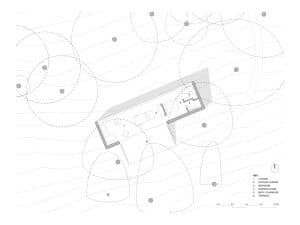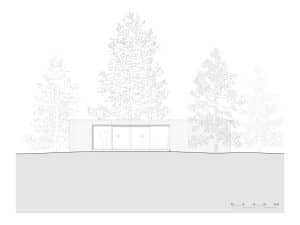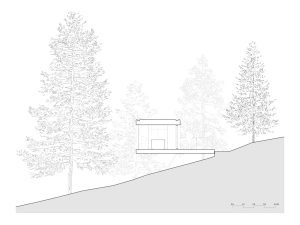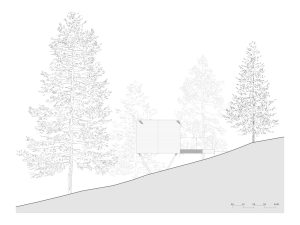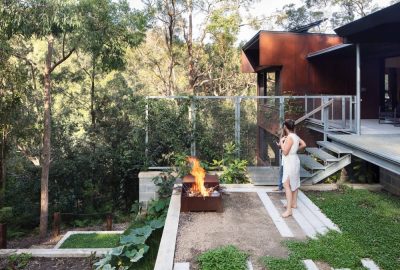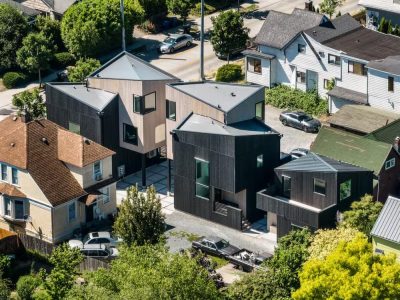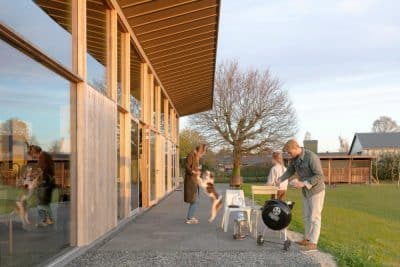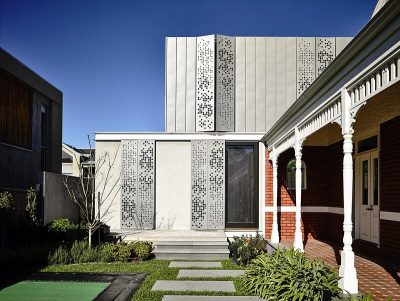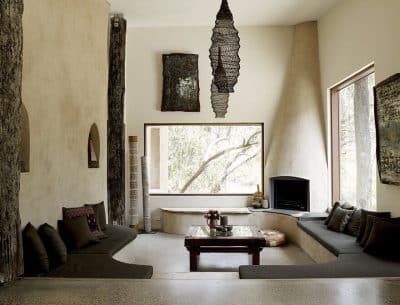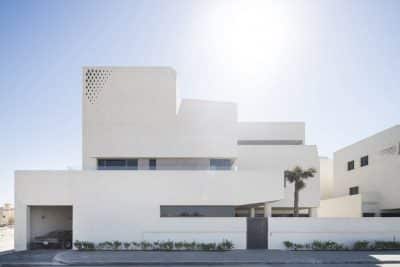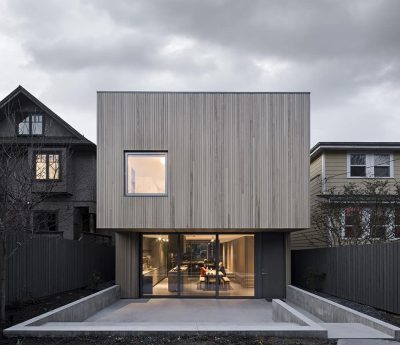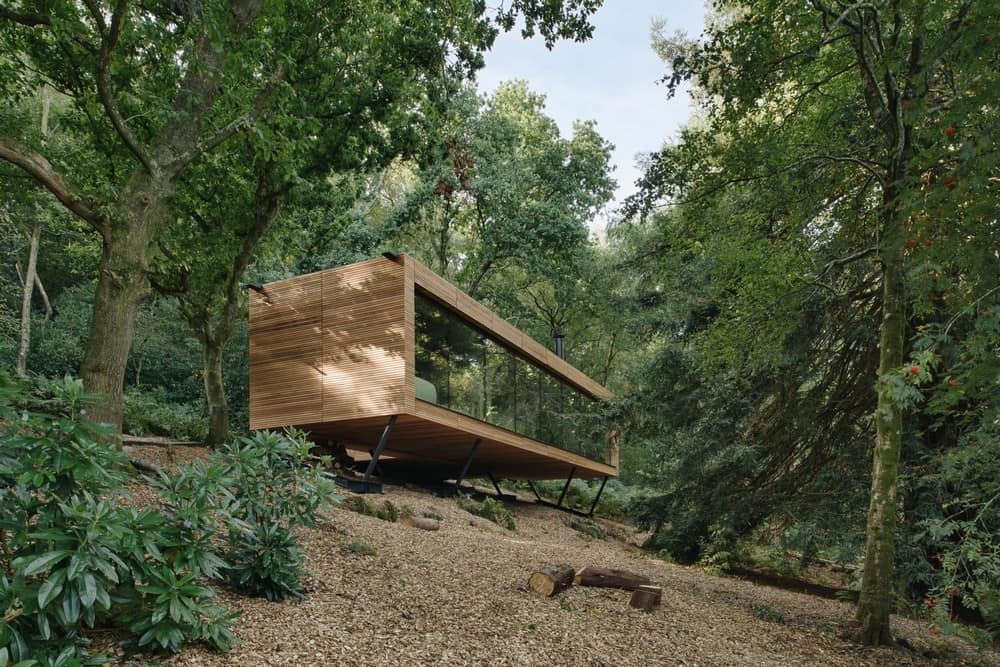
Project: Looking Glass Lodge
Architecture: Michael Kendrick Architects
Interior Designer: Looking Glass Lodge
Landscaper: Rutty Sark Gardens
Structural Engineer: Momentum
Location: Hastings, East Sussex, United Kingdom
Area: 49 m2
Year: 2022
Photo Credits: Tom Bird Photography
The lodge is located a short walk from the clients’ childhood home, and as lifelong residents of the area, their vision for this retreat was to enhance, protect and support visitors’ understanding of the local ecological biodiversity. Built by local craftsmen, the subtle design makes use of the sloping site, appearing elevated amongst the trees as the ground levels fall away below.
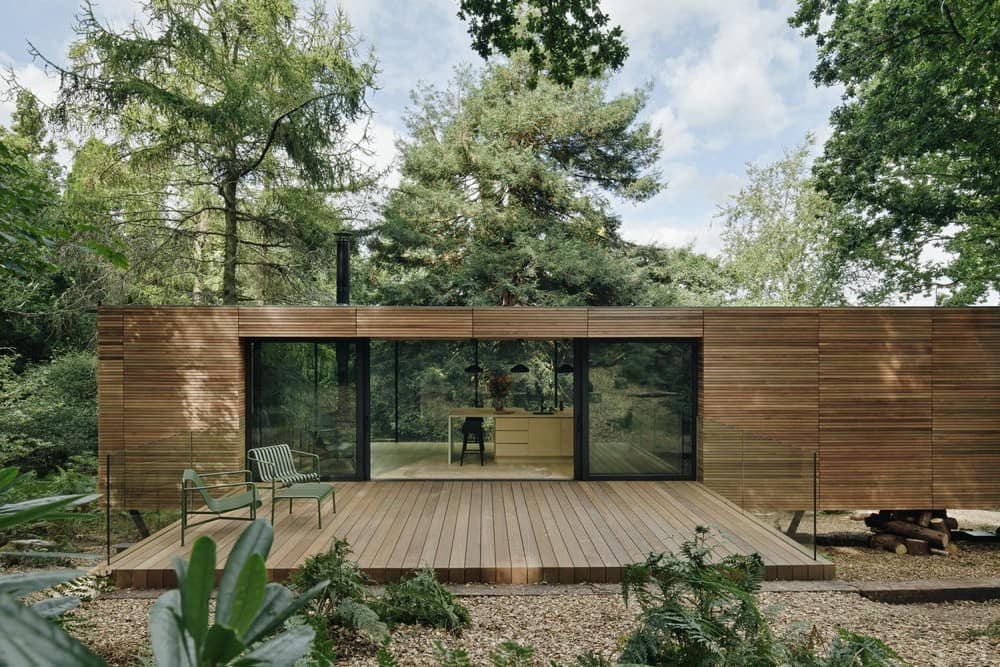
A refined, natural material palette sees western red cedar used as exterior and interior cladding – left unfinished, the facades will weather naturally to a familiar silver-grey colour. Large windows flood the lodge with light and offer a sense of transparency, providing visitors with far-reaching views and a chance to immerse themselves in the woodland. Self-tinting electrochromic glass grants privacy while limiting overheating and the spill of artificial light.
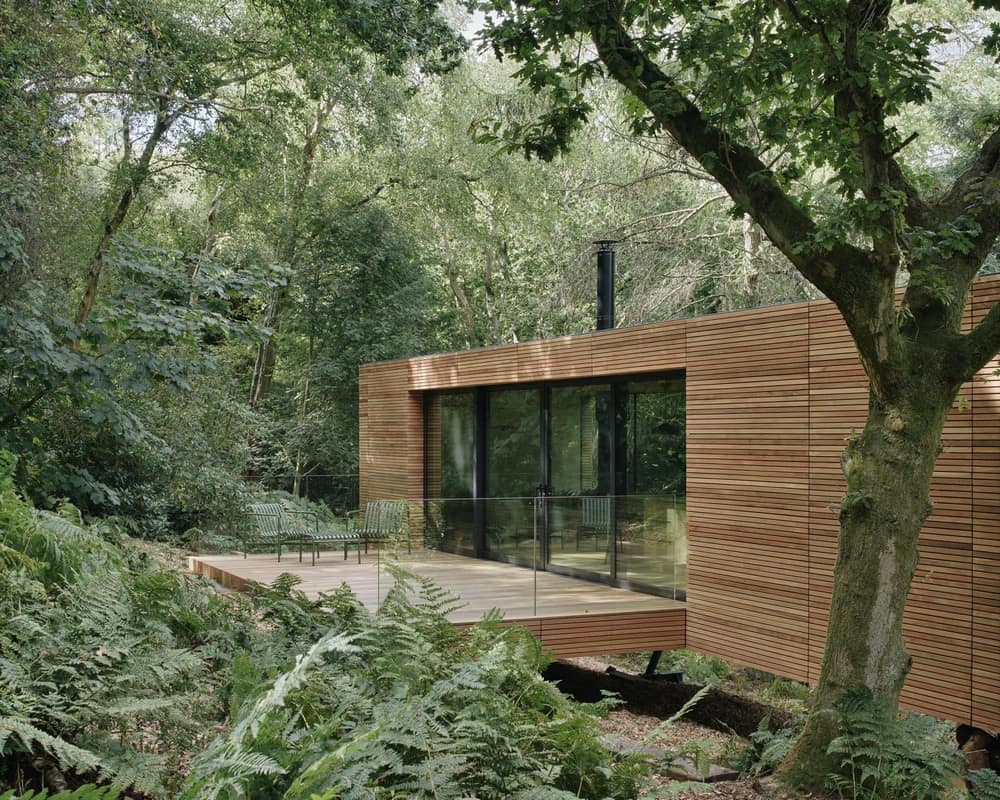
Critically, this glass minimises disruption to the site’s bat population, helping to secure the long-term habitat of this protected species. Within, a welcoming living space includes a log-burning stove that uses timber from fallen trees on site to heat the lodge in winter, at significantly lower running costs. The lodge’s thoughtful use of bespoke birch-plywood joinery subdivides the open-plan layout, separating the compact yet carefully-considered kitchen from the bedroom and ensuite. From manufacture to completion, preserving the site’s ecology was key.
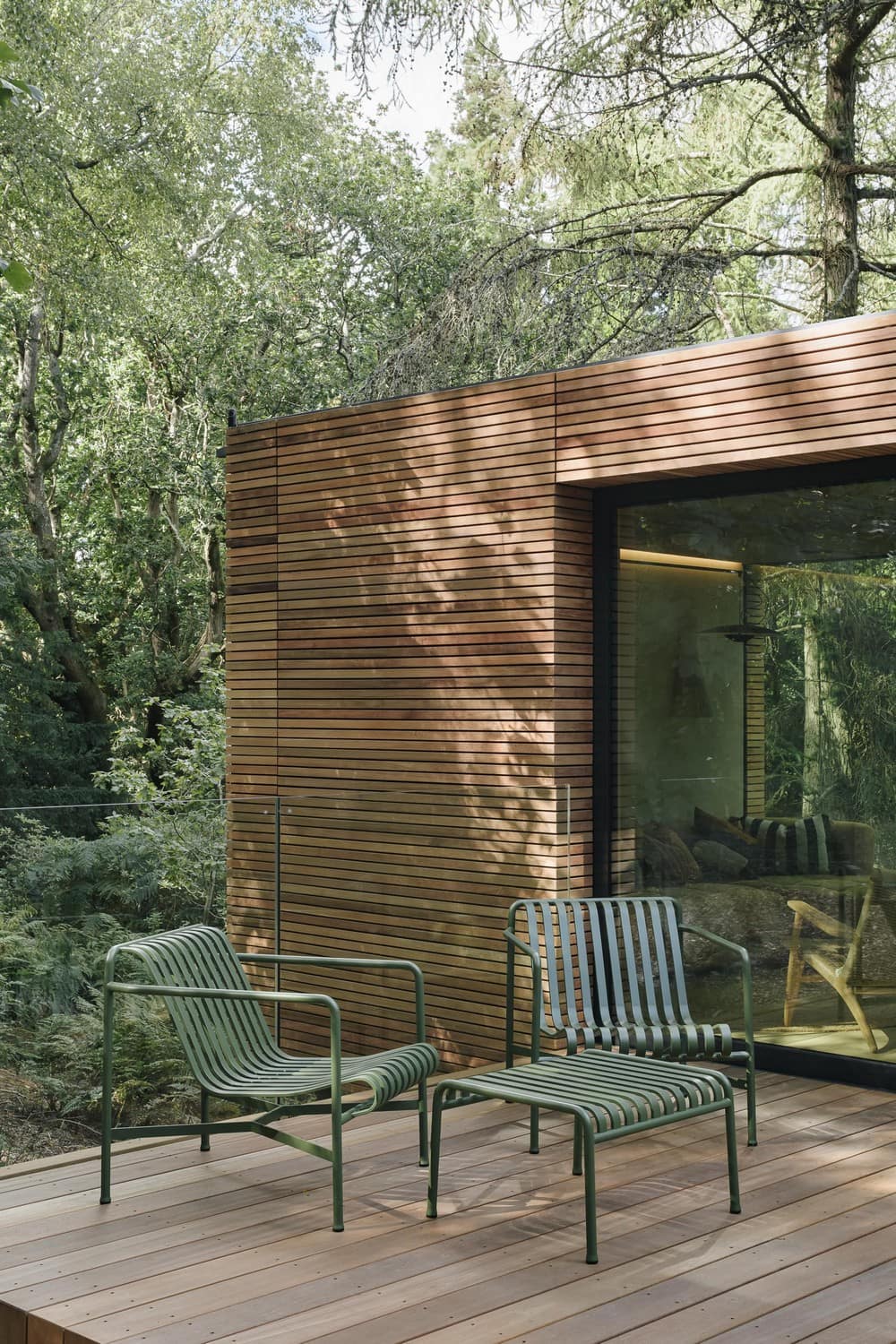
Off-site construction overcame the sloping site’s logistical limitations and delivered an efficient build programme with minimal disruption to the AONB. Located in a natural clearing, no trees needed felling to construct the lodge, which uses a hybrid steel/timber-framed structure, with screw-pile foundations for a low-impact approach. This avoids damage to existing trees, encourages natural regeneration of native flora on the site, and retains unobstructed movement for wildlife.

The site’s existing ecology, habitat, and treeline were key considerations throughout the project, from manufacture to completion. The lodge’s hybrid steel/timber-framed structure bears down on screw-pile foundations for a low-impact approach that avoids damage to existing tree roots, ensures no trees needed to be felled, and retains unobstructed access for wildlife. The project also prioritized off-site construction, in order to circumvent logistical limitations to the site, and safely achieve a minimally disruptive construction process.
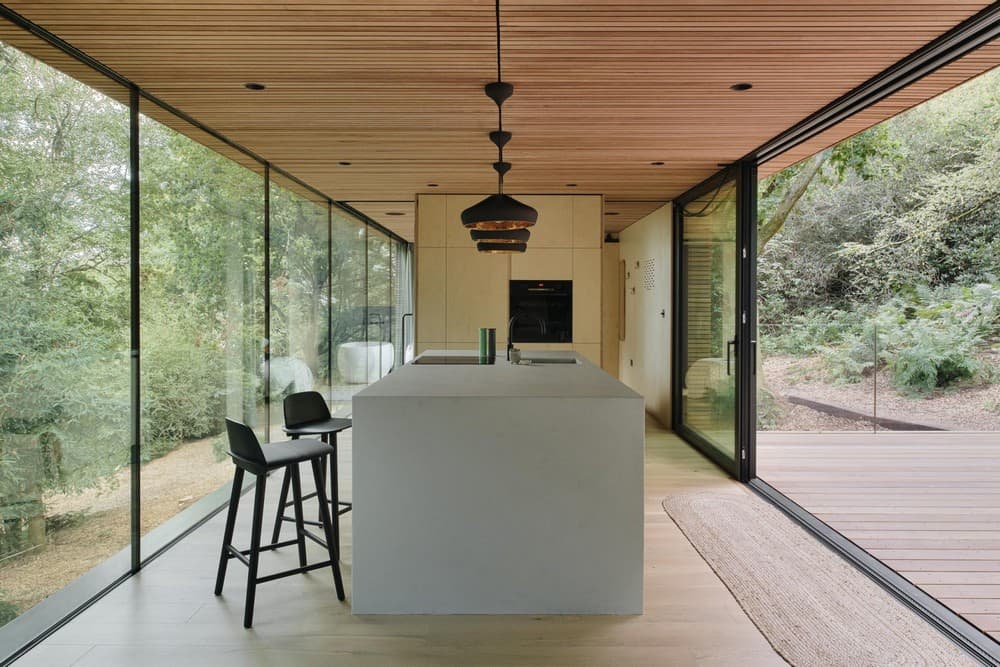
The build provided an opportunity for the site’s biodiversity to be enhanced above its current baseline, including removing invasive plants currently on site and adding bat and bird boxes to encourage the natural regeneration of native flora.
